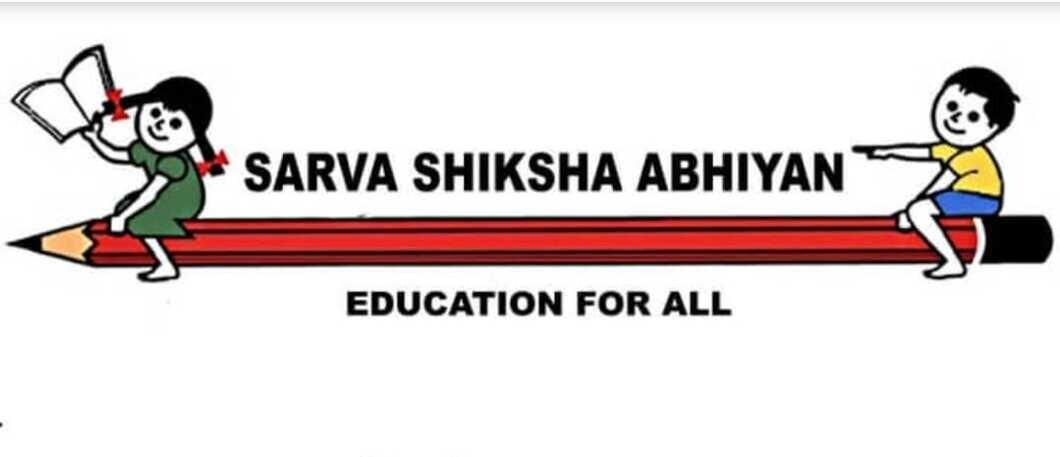Sarva Shiksha Abhiyan
The Sarva Shiksha Abhiyan, or SSA, is an Indian government programme aimed at universalizing elementary education in a time bound manner, with the 86th Amendment to the Indian Constitution making free and compulsory education for children aged 6 to 14, which was estimated to be 206 million children in 2001, a fundamental right under Article- 21A. Former Indian Prime Minister Atal Bihari Vajpayee pioneered the initiative. By 2010, the goal was to educate all children aged 6 to 14. However, the deadline has been extended indefinitely.
Today Current Affairs 2022
Key Points of Sarva Shiksha Abhiyan:
- Its initial budget was 7,000 crores, but the Indian government increased its funding to 21,000 crores (US$2.8 billion) in 2011-12, a 40 percent increase over the previous year.
- Many individuals and trusts have also given, and as the show expanded in popularity, the fund grew as well.
- The Sarva Shiksha Abhiyan (SSA) is a Universal Elementary Education programme.
- This initiative also aims to provide an opportunity for all students to improve their human potential by providing community-owned quality education in a mission mode.
- It is a response to the widespread need for high-quality basic education. Mehboob wrote the poem School Chalen Hum to promote the Sarva Shiksha Abhiyan (SSA) initiative.
- Sarva Shiksha Abhiyan was launched in 2018 alongside Rashtriya Madhyamik Shiksha Abhiyan to form Samagra Shiksha Abhiyan.
Sub-Programmes of Sarva Shiksha Abhiyan:
Sarva Shiksha Abhiyan’s Padhe Bharat Badhe Bharat is a countrywide sub-programme. Early reading failure causes children to fall behind in other courses. The curriculum is meant to help students in Classes I and II develop their early reading, writing, and mathematical skills. States were given a total of Rs.762 crore (US$100 million) under this initiative. The programme will incorporate not only a print-rich atmosphere and timely book distribution, but also innovative teacher mentorship and appraisal systems.
Since 2000-2001, SSA has provided a variety of interventions aimed at increasing universal access and retention, bridging gender and social category gaps in elementary education, and improving learning quality. Opening of new schools and alternate schooling facilities, construction of schools and additional classrooms, toilets and drinking water, teacher provisioning, regular teacher in service training and academic resource support, free textbooks and uniforms, and support for improving learning achievement levels / outcomes are all examples of SSA interventions. Changes have been made to the SSA’s approach, strategies, and norms as a result of the passage of the RTE Act.
The improvements include the following ideas that influence the vision and approach to elementary education: The National Curriculum Framework 2005 interprets a holistic view of education as having implications for a systemic redesign of the entire content and process of education, with considerable consequences for curriculum, teacher education, educational planning, and management. Equity refers to the establishment of conditions in which disadvantaged members of society, such as children of SC, ST, Muslim minorities, landless agricultural labourers, and children with special needs, can benefit from the chance. Access does not just mean making a school accessible to all children within a certain distance; it also means understanding the educational needs and plight of traditionally marginalised groups such as the SC, ST, and other sections of the most disadvantaged groups, the Muslim minority, girls in general, and children with special needs.
Gender concern entails not just making an effort to enable girls to keep up with boys, but also viewing education through the lens of the National Policy on Education of 1986/92, i.e. a decisive intervention to bring about a fundamental shift in women’s status. The importance of teachers in motivating them to innovate and establish a culture in and outside of the classroom that can provide an inclusive environment for children, particularly females from oppressed and marginalised backgrounds. Rather than focusing on punitive processes, the RTE Act imposes moral compulsion on parents, teachers, educational administrators, and other stakeholders. The RTE law cannot be implemented without a convergent and integrated educational management system.
Background of Sarva Shiksha Abhiyan:
It began as an intervention programme in 2002, and SSA has been in existence since 2000-2001. Its origins, however, may be traced back to 1993-1994, when the District Primary Education Programme (DPEP) was established with the goal of establishing universal primary education. Over the course of multiple phases, the DPEP encompassed 272 districts in 18 states. The Central Government has 85 percent and the State Governments split the cost of the programme at 15 percent.
A number of external organisations, notably the World Bank, the Department for International Development (DFID), and UNICEF, contributed to the Central share. More than $1500 million has been pledged to the programme by 2001, with 50 million youngsters covered. The authors concluded that DPEP’s net impact on minority children was impressive, whereas there was minimal evidence of any influence on girls’ enrolment in Phase I of the programme. Nonetheless, they determined that the DPEP investment was worthwhile because it pioneered a novel method to elementary school interventions in India.
FAQs
When was the Sarva Shiksha Abhiyan launched?
The Sarva Shiksha Abhiyan was established in 2001 by the Ministry of Human Resource Development (MHRD) of the Government of India. The programme was started by former Indian Prime Minister Atal Bihari Vajpayee. By 2010, all children aged 6 to 14 will have had an education. The deadline, however, has been extended indefinitely.
What is the main objective of Sarva Shiksha Abhiyan?
With the 86th Amendment to the Indian Constitution making free and compulsory education for children aged 6 to 14 (estimated to be 206 million children in 2001) a fundamental right, the Sarva Shiksha Abhiyan, or SSA, is an Indian government programme aimed at universalizing elementary education in a time-bound manner (Article- 21A). The SSA Program’s main goal is to achieve Universalization of Elementary Education (UEE) in the country. The Sarva Shiksha Abhiyan’s overall purpose is to provide universal access and retention, close gender and social inequities in education, and improve learning levels for children.
What is SSA scheme?
The Sarva Shiksha Abhiyan (SSA) is the Government of India’s flagship programme for achieving Universalization of Elementary Education (UEE) in a time-bound manner, as required by the 86th amendment to the Indian Constitution, which makes free and compulsory education for children aged 6 to 14 years a Fundamental Right.
Why SSA was started?
The Sarva Shiksha Abhiyan (SSA) is the government of India’s main programme to accomplish Universalization of Elementary Education (UEE) in a time-bound manner, as specified by the Indian Constitution. The right to education became a fundamental right in India with the 86th amendment to the Indian Constitution.
Why is SSA important?
It has several significant features, including: providing a practical and elementary education to all children aged 6 to 14. With the active participation of the community in the management of the school, social, regional, and gender barriers will be bridged. To give youngsters the opportunity to learn about and master their natural surroundings.
Buy Prime Test Series for all Banking, SSC, Insurance & other exams



 Indian Olympic Medal Winners List Till N...
Indian Olympic Medal Winners List Till N...
 Who is the Inventor of the Gramophone?
Who is the Inventor of the Gramophone?
 HS Dhaliwal Appointed New DGP Of Andaman...
HS Dhaliwal Appointed New DGP Of Andaman...
